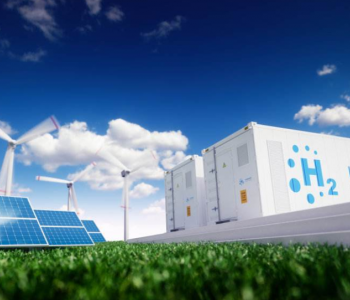At the recent regular press conference held by the National Energy Administration, Liu Yafang, deputy director of the Energy Conservation and Technology Equipment Department of the National Energy Administration, introduced that by the end of 2022, the installed capacity of new energy storage projects in China had reached 8.7 million kilowatts, with an average energy storage time of about 2.1 hours, an increase of more than 110% over the end of 2021. In terms of provinces, by the end of 2022, the top five provinces with cumulative installed capacity were: 1.55 million kilowatts in Shandong, 900,000 kilowatts in Ningxia, 710,000 kilowatts in Guangdong, 630,000 kilowatts in Hunan and 590,000 kilowatts in Inner Mongolia.
New energy storage refers to technologies other than pumped storage, including new lithium-ion batteries, flow batteries, compressed air, and mechanical energy storage. To achieve the goal of peak carbon dioxide emissions and carbon neutrality, it has become essential to develop China's energy industry to accelerate the construction of a new power system with a high proportion of renewable energy. Because of the intermittence, randomness, and fluctuation of wind power and photovoltaic power generation, the existing power system must develop all kinds of energy storage to make up for the gap in the flexibility adjustment ability of the power system if it wants to accept and absorb large-scale wind power and photovoltaic power generation with high proportion and strong fluctuation. The new type of energy storage has the advantages of fast response, flexible configuration, and short construction period, and can play a variety of roles in power operation, such as peak, peak regulation, frequency modulation, climbing, and black start, and is an integral part of building a new type of power system.
Liu Yafang introduced that with the gradual improvement of the policy system and the continuous optimization of the market environment, various demonstrations have led to prominent driving effects, and the development of new energy storage has entered the fast lane. At the same time, technological breakthroughs and economic improvement have created favorable conditions for the rapid growth of new energy storage. Lithium-ion batteries are the mainstay, and the diversified development trend of new energy storage technologies is apparent. The data shows that by the end of 2022, among the new energy storage installations in China, lithium-ion batteries accounted for 94.5%, compressed air 2%, flow batteries 1.6%, lead-acid (carbon) batteries 1.7%, and other technical routes 0.2%. In addition, flywheel, gravity, sodium ion, and other energy storage technologies have also entered the engineering demonstration stage.

"In recent years, the development speed of national new energy storage technology has been continuously improved, the energy density, power density, and cycle life have been greatly improved, and the safety prevention and control technologies and measures have been continuously improved. The energy density of lithium-ion batteries for energy storage has more than doubled compared with that of ten years ago, and the power density has increased by about 50%. At present, a relatively complete industrial chain has been formed. Technologies such as flow batteries, sodium-ion batteries, compressed air energy storage, and flywheel energy storage have developed rapidly. Despite the rapid increase in upstream raw materials, the cost of energy storage battery systems with lithium-ion batteries as the mainstream still needs to grow. The new energy storage industry is in the transitional stage from R&D demonstration to the initial commercialization phase and gradually forms an industrialization system. " Liu Yafang said.
With the significant changes in power supply structure and grid structure in the domestic power industry, the installed scale of power continues to expand, the complexity of power system operation and management continues to increase, and the demand for auxiliary services increases significantly. New energy storage, self-provided power plants, virtual power plants, electric vehicle charging networks, and other additional service providers need market-oriented mechanisms to guide and promote development. Zhao Xueshun, deputy director of the Market Supervision Department of the National Energy Administration, said that at the end of last year, a unified auxiliary service rules system was formed in China. Through the market-oriented mechanism of additional services, last year, the whole system regulation capacity was more than 90 million kilowatts. The average annual output of clean energy was more than 100 billion kWh. Coal-fired power enterprises received compensation income of about 32 billion yuan for auxiliary services, which effectively stimulated the enthusiasm for flexible transformation of coal-fired power enterprises and promoted the conversion of coal-fired power from conventional main power supply to essential support and system regulation power supply.
In recent years, China has accelerated the construction of a unified national electricity market system. In 2022, the transaction scale and the number of subjects in the power market reached a record high. According to the statistics of transaction settlement, the total electricity traded in the national market last year was 5.25 trillion kWh, up 39% year-on-year, accounting for 60.8% of the total electricity consumption, up 15.4 percentage points year-on-year. Among them, the cross-provincial and cross-regional market-oriented trading power exceeded 1 trillion kWh for the first time, up nearly 50% year-on-year, and the role of the market in promoting the optimal allocation of power resources in the broader range has been continuously enhanced.
